Elevate your smartphone photography by exploring enchanting patterns and textures. Focus on architectural details for striking geometric compositions. Capture nature's intricate textures in flora and tiny wonders. Seek out vibrant urban graffiti and street art for bold designs. Play with reflective surfaces and water for abstract effects. Experiment with fabric patterns and textiles for diverse textures. Embrace weathered and rustic surfaces for moody imagery. Utilize shadows and light patterns to create drama. Transform everyday objects into abstract compositions. Immerse yourself in macro photography to reveal hidden textures in small items. By mastering these techniques, you'll reveal a world of creative possibilities.
Architectural Details and Geometry
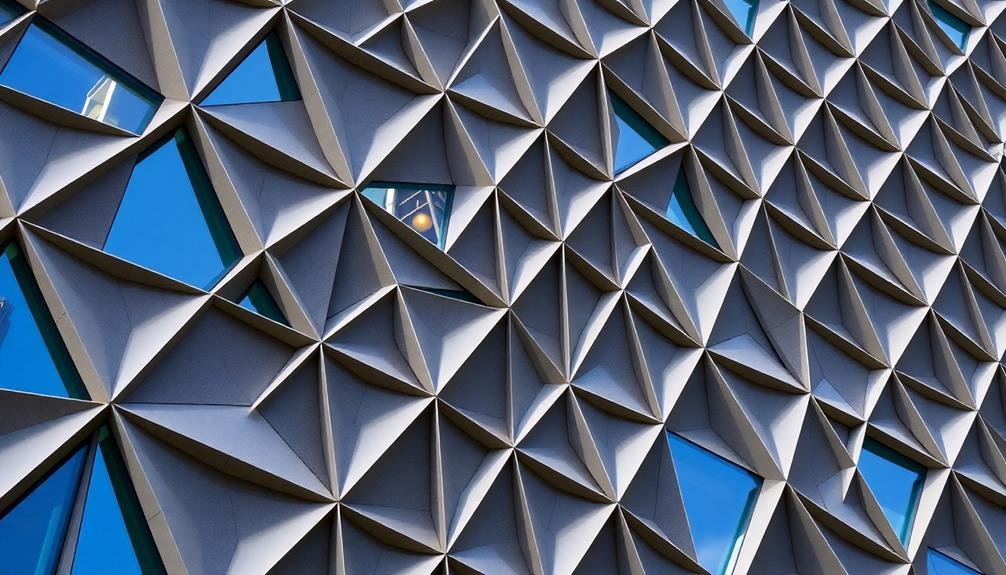
Architectural details and geometric patterns offer a wealth of opportunities for smartphone photographers. You'll find these elements in both modern and historic buildings, providing striking subjects for your images. Look for repeating shapes, intricate designs, and symmetrical structures that catch your eye.
When shooting architectural patterns, pay attention to light and shadow. They can enhance the depth and texture of your subject, creating visually compelling compositions. Try photographing during different times of day to capture how changing light affects the patterns.
Don't limit yourself to entire buildings. Zoom in on specific details like ornate moldings, tile work, or unique window shapes. These close-ups can result in abstract images that highlight interesting textures and forms.
Experiment with angles to add dynamic interest to your shots. Tilt your phone to capture diagonal lines or lie on the ground for a dramatic upward perspective. Use leading lines in staircases, hallways, or bridges to draw the viewer's eye through the frame.
Remember to keep your smartphone steady when shooting architectural patterns. Use both hands or a small tripod to guarantee sharp, clear images of these intricate subjects.
Natural Textures in Flora
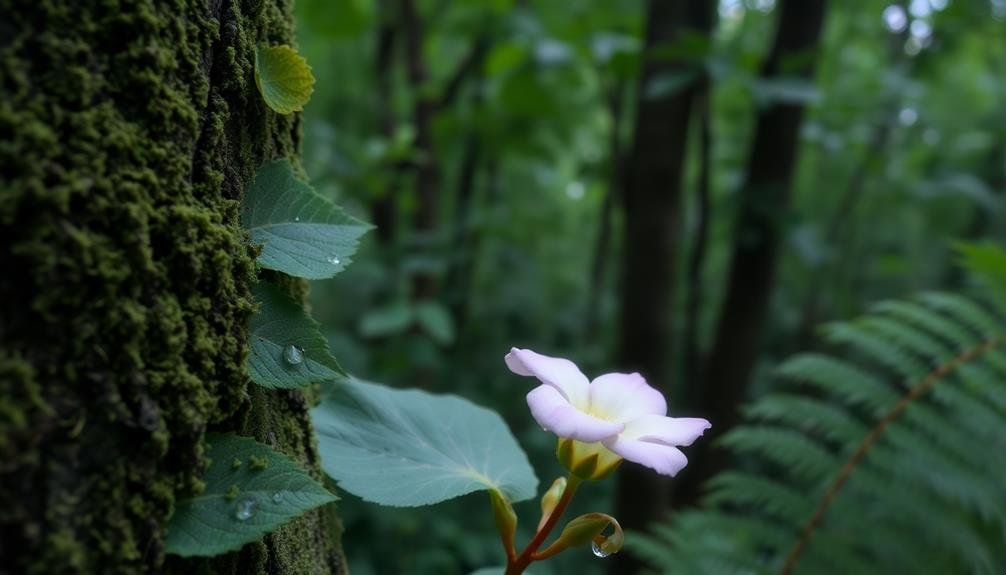
A botanical wonderland awaits smartphone photographers in the world of natural flora. You'll find an abundance of textures and patterns that can elevate your smartphone photography to new heights. From the intricate veins of leaves to the delicate petals of flowers, nature offers a vast array of subjects to capture.
When shooting natural textures, you'll want to pay close attention to lighting. Soft, diffused light often works best to highlight the subtle details in plants. Don't be afraid to get up close and personal with your subject; many smartphones now feature excellent macro capabilities.
Here's a quick guide to some popular flora subjects and their unique textures:
| Plant Type | Texture | Photography Tips |
|---|---|---|
| Ferns | Feathery | Focus on symmetry |
| Succulents | Waxy | Play with shadows |
| Tree Bark | Rough | Use contrasty lighting |
| Moss | Velvety | Capture water droplets |
Remember to experiment with different angles and compositions. You might find that an abstract close-up of a leaf's texture is more striking than a traditional full-plant shot. Don't hesitate to use editing apps to enhance the natural textures you've captured, bringing out the intricate details that make flora so fascinating.
Urban Graffiti and Street Art
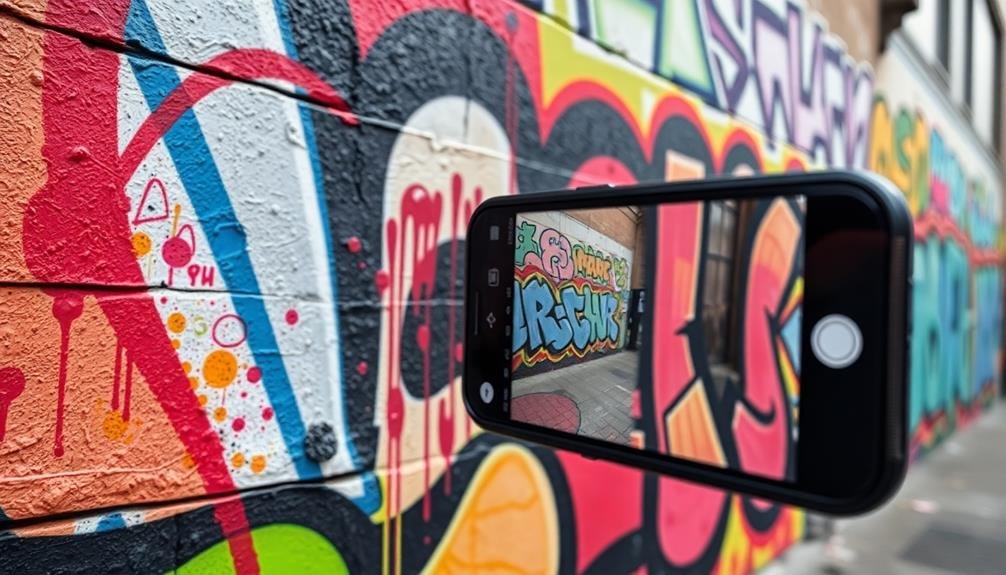
While natural textures abound in flora, the urban landscape offers its own vibrant canvas for smartphone photographers. Urban graffiti and street art provide a wealth of unique patterns, textures, and colors that can add depth and interest to your photos.
When shooting urban art, look for bold, contrasting colors and intricate designs. Zoom in on interesting details to capture abstract patterns or focus on the interplay between the art and its surroundings. Pay attention to the texture of the wall or surface beneath the artwork, as it can add an extra layer of visual interest.
Consider the lighting conditions when photographing street art. Early morning or late afternoon light can create dramatic shadows and enhance the artwork's dimensionality. For vibrant murals, try shooting on overcast days to avoid harsh shadows and capture true colors.
Experiment with different angles and perspectives to find unique compositions. Try capturing reflections of street art in puddles or windows for a creative twist.
Don't forget to respect the artist's work and local laws when photographing urban art. Always seek permission if required and avoid damaging or altering the artwork.
Reflective Surfaces and Water
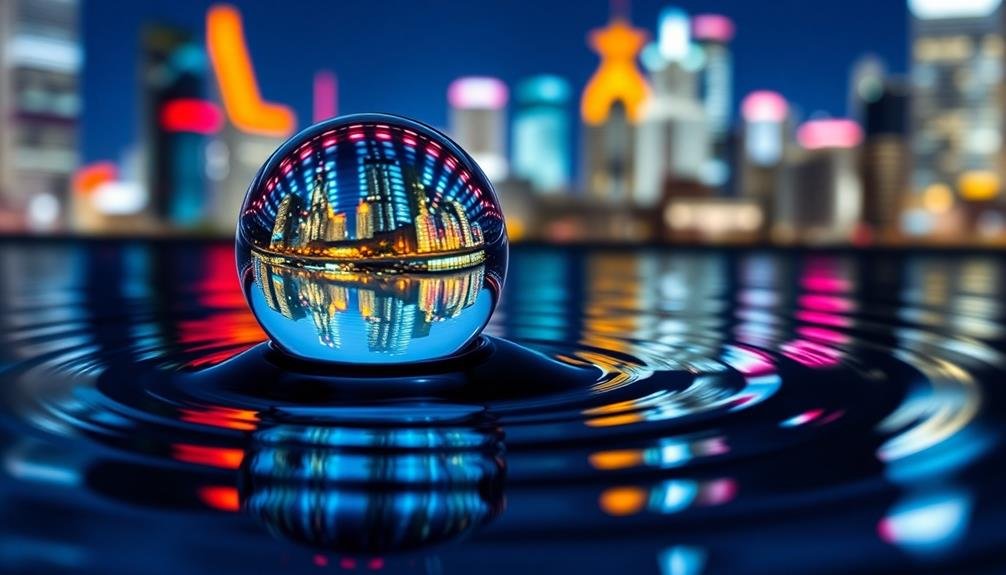
Reflective surfaces and water offer smartphone photographers a treasure trove of intriguing patterns and textures. You'll find endless possibilities for capturing unique images, from puddles reflecting cityscapes to rippling lake surfaces distorting the surrounding landscape.
Don't overlook everyday reflective objects like windows, mirrors, or polished metal surfaces, which can create fascinating abstract compositions.
When shooting reflective surfaces and water, consider these tips:
- Use HDR mode to balance exposure between bright reflections and darker areas
- Experiment with different angles to capture the most interesting distortions
- Focus on the reflection itself rather than the reflected subject for a fresh perspective
- Try long exposures to smooth out water textures and create dreamy effects
To enhance your reflective shots, try using editing apps to adjust contrast, saturation, and clarity. You can also play with symmetry by flipping your image or creating a mirror effect.
Remember that timing is essential when photographing water; early morning or late afternoon often provide the best lighting conditions. By mastering reflective surfaces and water in your smartphone photography, you'll add an enchanting dimension to your portfolio and discover new ways to see the world around you.
Fabric Patterns and Textiles
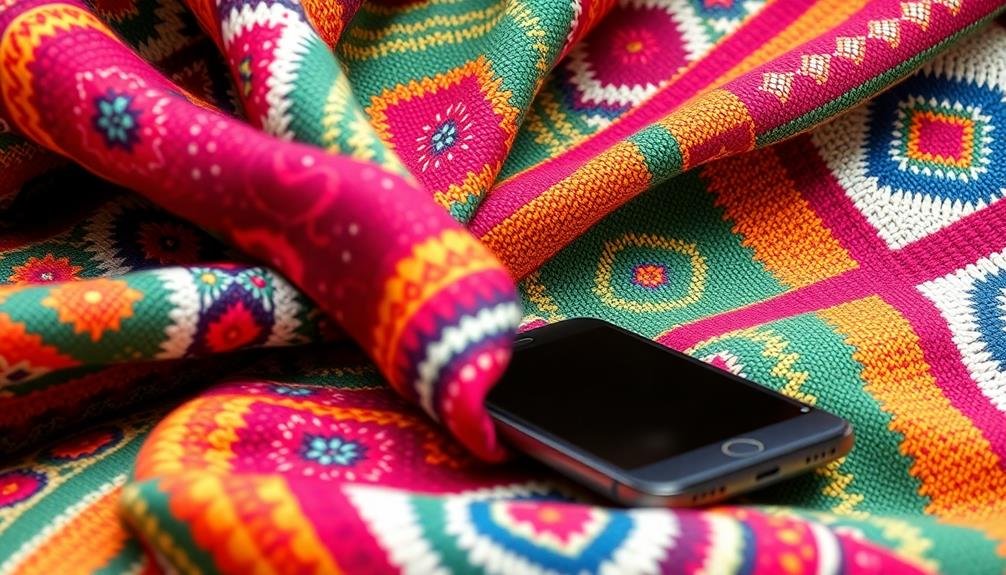
Exploring fabric patterns and textiles can open up a world of creative possibilities for smartphone photographers. You'll find an abundance of textures, colors, and designs in everyday fabrics that can elevate your images. Start by examining the clothes in your wardrobe, focusing on intricate knits, bold prints, and varied textures like denim, wool, or silk.
When shooting fabric patterns, pay attention to lighting. Natural light often works best, revealing subtle details and enhancing colors. Experiment with different angles to capture the texture effectively. Close-up shots can highlight the weave of a fabric, while wider shots showcase overall patterns.
Don't limit yourself to clothing. Look for interesting textiles in home decor items like curtains, rugs, or throw pillows. These can provide unique backgrounds for product photography or serve as subjects themselves.
Try combining different fabrics for contrast and visual interest. Layer textures or juxtapose smooth and rough surfaces. Play with folds and drapes to create dynamic compositions.
Remember to adjust your camera settings to capture the fine details of the fabric, especially when shooting up close.
Repetitive Elements in Landscapes
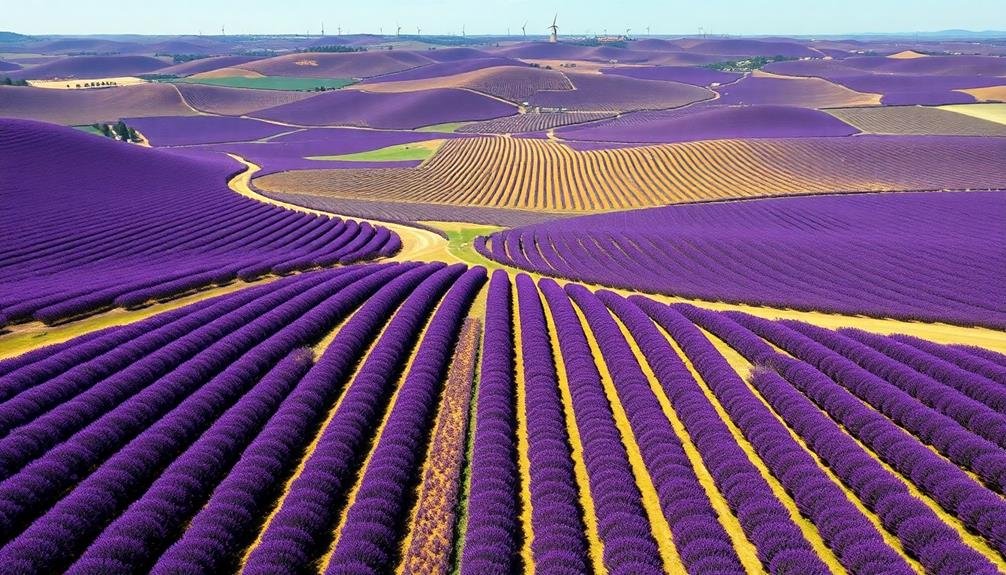
Countless repetitive elements in landscapes offer smartphone photographers unique opportunities for striking compositions. From rows of trees to ripples in sand dunes, nature provides an abundance of patterns to capture. You'll find these repetitive elements everywhere, from rural farmlands to urban cityscapes.
To make the most of repetitive elements in your landscape photography:
- Look for symmetry and rhythm in natural formations
- Use leading lines to draw the viewer's eye through the image
- Experiment with different angles to emphasize patterns
- Break the pattern intentionally for added visual interest
When photographing repetitive landscape elements, consider using your smartphone's panorama mode to capture a wider view. This can enhance the impact of recurring patterns.
Pay attention to lighting conditions, as shadows can create additional patterns or emphasize existing ones.
Don't forget to explore man-made repetitive elements in landscapes, such as vineyards, terraced rice fields, or rows of wind turbines. These can create powerful visual statements about human interaction with nature.
Weathered and Rustic Surfaces
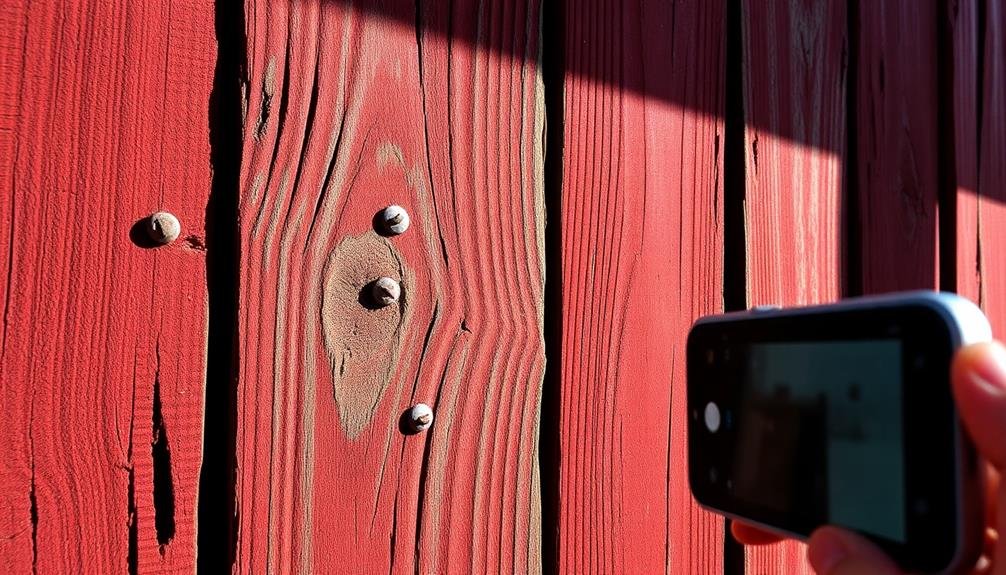
While repetitive elements in landscapes offer broad, sweeping patterns, weathered and rustic surfaces provide a more intimate canvas for smartphone photographers. You'll find these textures in old barns, peeling paint, rusty metal, or cracked concrete. They're perfect for creating moody, atmospheric shots that tell stories of time and wear.
To capture weathered surfaces effectively:
| Technique | Effect | Best for |
|---|---|---|
| Side lighting | Enhances texture | Wood grain, rust |
| Macro mode | Reveals details | Peeling paint, cracks |
| HDR | Balances exposure | High-contrast scenes |
When shooting weathered surfaces, look for interesting color combinations. Rust's warm oranges against cool blues can create striking contrasts. Don't forget to experiment with black and white conversions, which can emphasize texture and form.
Composing your shot is essential. Use the rule of thirds to place interesting textures at intersection points. Alternatively, fill the frame with texture for a more abstract approach. Remember, weathered surfaces often have imperfections – embrace these as part of the character and story of your subject.
Shadows and Light Patterns
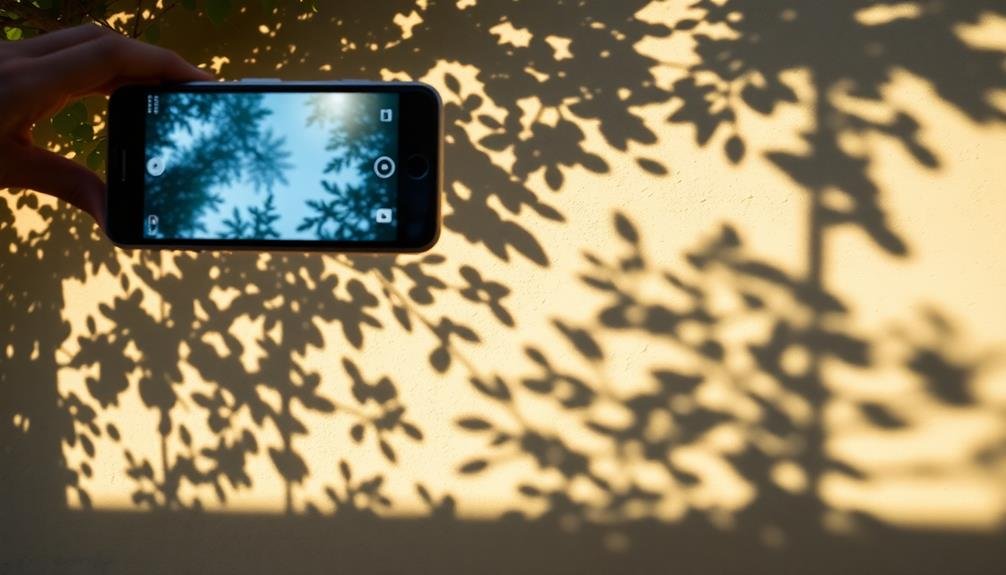
Shadows and light patterns offer you endless opportunities to create dramatic contrasts in your smartphone photography.
You'll find that natural light techniques, such as shooting during golden hour or utilizing side lighting, can enhance the depth and texture of your images.
Creating Dramatic Contrasts
Through the interplay of light and shadow, smartphone photographers can craft striking images that captivate viewers. To create dramatic contrasts, you'll need to master the art of manipulating light and dark elements within your frame.
Start by seeking out high-contrast scenes in your environment, such as sunlight filtering through blinds or the stark shadows cast by architectural features.
Experiment with different lighting conditions to achieve the desired effect:
- Harsh midday sun for bold, defined shadows
- Golden hour light for softer, more nuanced contrasts
- Artificial lighting for controlled, dramatic results
- Backlit subjects for silhouettes and rim lighting
When composing your shot, pay attention to the balance between light and dark areas. Use the rule of thirds to place your subject strategically within the frame, allowing the contrast to enhance rather than overpower the image.
Don't be afraid to embrace negative space; sometimes, a minimalist approach can amplify the impact of your contrasts.
Editing tools can further enhance your dramatic contrasts. Adjust exposure, highlights, and shadows to fine-tune the balance between light and dark areas.
Natural Light Techniques
Natural light offers a wealth of creative possibilities for smartphone photographers. You'll find that mastering natural light techniques can elevate your pattern and texture shots considerably.
Start by observing how light interacts with different surfaces throughout the day. Early morning and late afternoon provide soft, warm light that can enhance textures and create subtle shadows.
To capture interesting light patterns, look for dappled sunlight filtering through leaves or architectural elements. These create intricate designs that add depth to your images.
When shooting indoors, position your subject near a window to take advantage of diffused natural light. This softens textures and reveals subtle details.
For more dramatic effects, try backlighting your subject. This technique can create striking silhouettes and highlight textures.
Experiment with side lighting to emphasize the dimensionality of patterns and textures. You'll notice how shadows form and change as you adjust your angle.
Don't forget to use your smartphone's HDR mode when dealing with high-contrast scenes. It'll help balance exposure and retain details in both highlights and shadows.
Abstract Compositions in Everyday Objects
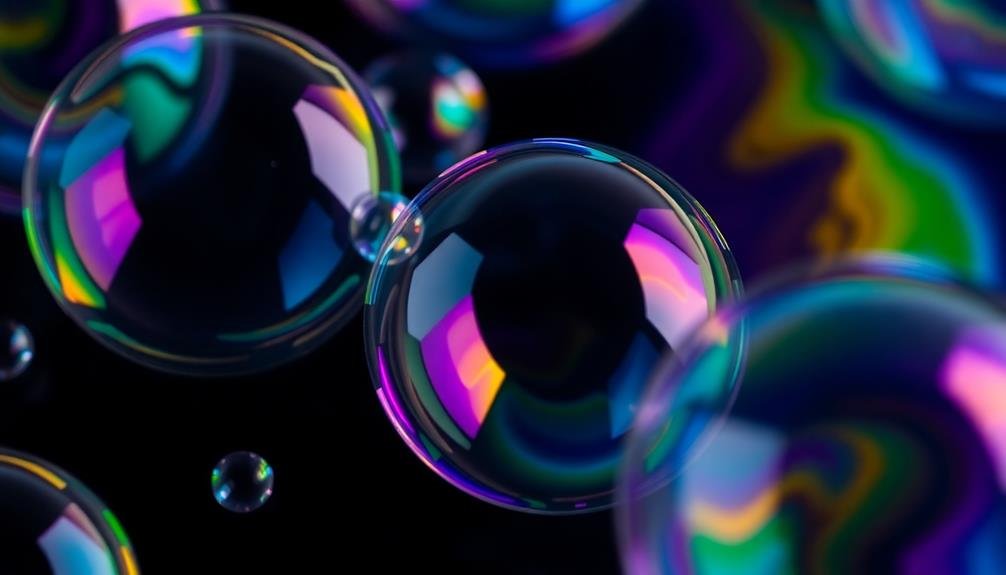
Everyday objects can become extraordinary subjects for abstract smartphone photography when viewed from fresh perspectives. Look for unique patterns, textures, and shapes in items you encounter daily. Zoom in on the intricate details of a leaf, the geometric patterns of a building facade, or the swirls in a cup of coffee.
By focusing on these elements, you'll create enchanting abstract images that challenge viewers' perceptions.
To find abstract compositions in everyday objects:
- Explore different angles and viewpoints
- Play with light and shadows to enhance textures
- Isolate specific parts of an object to create mystery
- Experiment with close-up shots to reveal hidden details
Don't be afraid to get creative with common household items. A kitchen whisk, a crumpled piece of paper, or even the condensation on a glass can yield stunning abstract images.
Remember to experiment with your smartphone's camera settings, such as adjusting exposure and focus, to emphasize the patterns and textures you want to highlight.
Macro Textures of Small Items
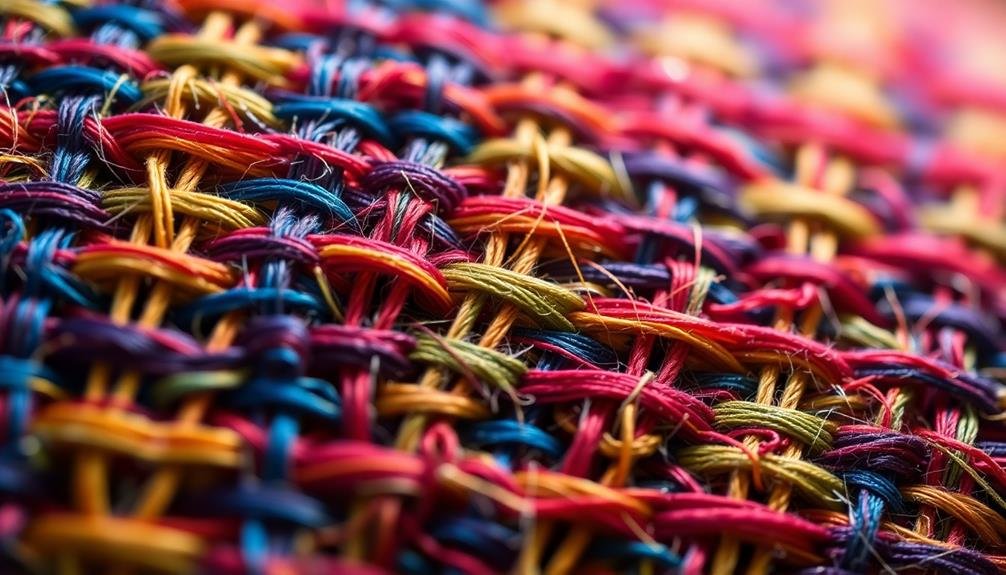
You'll find a wealth of enchanting macro textures in everyday objects and nature's tiny wonders, perfect for smartphone photography.
Explore the intricate details of household items like fabric weaves, food textures, or paper surfaces to create stunning close-up shots.
For nature enthusiasts, focus on the minute patterns of leaves, flower petals, or insect wings to reveal a hidden world of beauty.
Everyday Objects Up Close
A photographer's keen eye can transform mundane household items into intriguing macro subjects. You'll be amazed at the textures and patterns that emerge when you zoom in on everyday objects.
Try exploring the intricate details of fabrics, like the weave of a cotton shirt or the fuzzy surface of a wool sweater. Kitchen items offer a wealth of possibilities, from the porous structure of a sponge to the crystalline patterns of sugar or salt grains.
Don't overlook the beauty in nature that's right at your fingertips. Examine leaves, flowers, or even fruits and vegetables for stunning close-up shots. The key is to experiment with different angles and lighting to highlight the unique textures you discover.
Here are some everyday objects that make excellent macro subjects:
- Soap bubbles or foam
- Condensation droplets on glass
- The surface of a wooden cutting board
- The spiral grooves of a vinyl record
Remember to use your smartphone's macro mode or a clip-on macro lens for the best results. With practice, you'll start seeing the world around you in a whole new light, finding beauty and intrigue in the most unexpected places.
Nature's Tiny Wonders
While everyday objects offer fascinating macro subjects, nature provides an even more intricate world of tiny wonders. You'll find an abundance of textures and patterns in leaves, flowers, insects, and other small natural elements. Start by exploring your backyard or local park, where you'll discover a wealth of macro opportunities.
Focus on the delicate veins of a leaf, capturing the intricate network that sustains plant life. Zoom in on flower petals to reveal their velvety texture and subtle color gradients. Don't overlook the fascinating patterns on butterfly wings or the compound eyes of insects.
Tree bark offers a rugged canvas of lines and crevices, while moss and lichen create miniature forests when viewed up close. Examine dewdrops on grass blades or spider webs for ethereal, glassy textures. Feathers, seeds, and pollen grains all present unique textures worth exploring.
Remember to use your smartphone's macro mode or a clip-on macro lens for the best results. Experiment with natural lighting, and try shooting during the golden hour for warm, soft illumination that enhances textures.
With patience and a keen eye, you'll uncover nature's hidden masterpieces.
Frequently Asked Questions
What Camera Settings Are Best for Capturing Patterns and Textures?
For capturing patterns and textures, you'll want to use a high aperture (f/8-f/16) for depth of field, low ISO for clarity, and a slower shutter speed. Don't forget to enable macro mode for close-up shots.
How Can I Improve Texture Clarity When Shooting in Low Light?
To improve texture clarity in low light, you'll want to stabilize your camera, use a slower shutter speed, and increase ISO. Don't forget to widen your aperture and try using a small LED light for targeted illumination.
Are There Specific Smartphone Apps for Enhancing Pattern Photography?
You'll find several apps perfect for pattern photography. Try VSCO, Snapseed, or Adobe Lightroom Mobile. They offer tools to enhance contrast, adjust saturation, and sharpen details. Experiment with filters and manual controls to make patterns pop.
What Post-Processing Techniques Work Best for Highlighting Textures in Smartphone Photos?
You'll want to focus on enhancing contrast and sharpness. Try adjusting levels, boosting clarity, and using selective sharpening. Don't forget to play with shadows and highlights. HDR techniques can also help bring out textures effectively.
How Do I Avoid Moiré Patterns When Photographing Intricate Textures?
To avoid moiré patterns, you'll want to adjust your shooting angle slightly. Don't shoot straight on; tilt your phone a bit. Also, try stepping back and zooming in, or using a macro lens attachment if available.
In Summary
You've now got a wealth of patterns and textures to explore with your smartphone camera. Don't be afraid to experiment and push your creative boundaries. Remember, these are just starting points – the real magic happens when you develop your unique eye for textures and patterns. Keep practicing, and you'll soon find yourself spotting fascinating compositions everywhere you go. Happy shooting, and let your smartphone reveal a world of visual wonders!


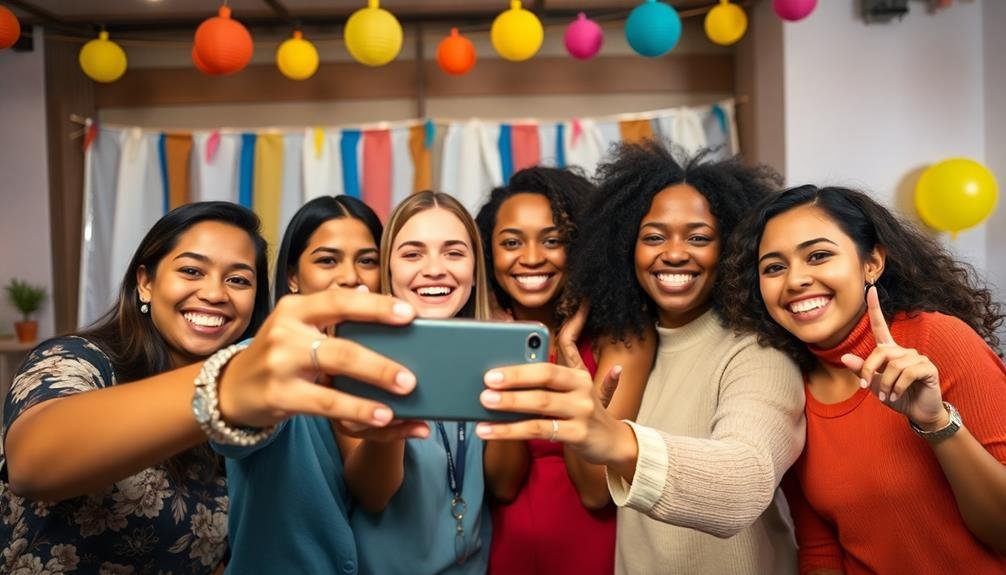

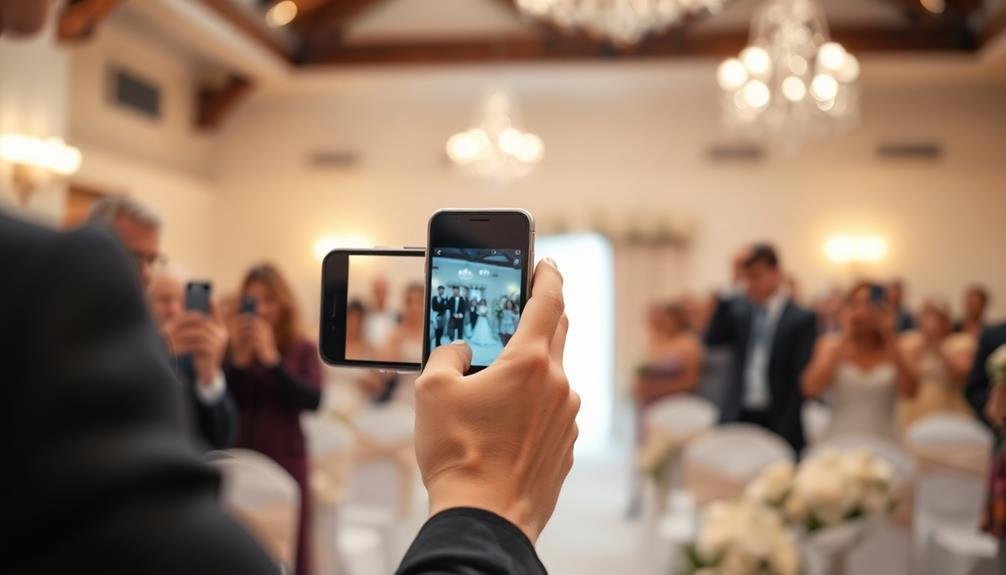
Leave a Reply